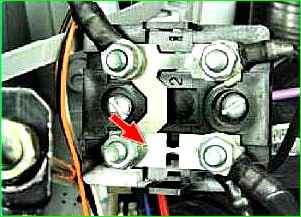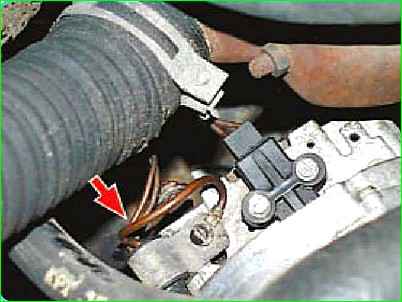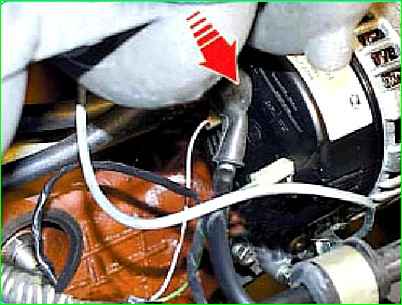The battery, generator and starter are all responsible for starting the engine
In order for each node to perform its task, they need to be consistent
Without a battery, the starter will not start moving, without the starter, the engine will remain silent and the generator will remain without work.
And without a generator, the battery will not be able to replenish the expended energy.
If on the multifunction display of the instrument cluster of cars produced since 2003 with ZMZ-40524 and UMZ-4218 engines the voltage value is displayed intermittently, or the voltmeter arrow in the instrument cluster of cars produced before 2003 and cars produced since 2003 with ZMZ engines -4063, ZMZ-40522, UMZ-4215 is in the left red zone of the scale (at the same time, the low battery warning light in the instrument cluster is lit), which means that current does not flow from the generator to the on-board network and the battery’s energy reserve is consumed.
This reserve is limited and depends on the battery capacity.
If the battery was fully charged, you can drive to the garage without a generator, but it is better to try to fix the problem on the spot.
Check that the accessory drive belt is not broken.
If the belt is intact, check its tension.
Press the top of the belt with your thumb and see how much it bends.
If the deflection is not within the norm, adjust its tension or replace the belt (see “Replacing accessory drive belts”)
If the belt tension is normal, check to see if the 90 A fuse link in fuse block 3, located in the engine compartment next to the battery, has burned out.

This fuse link (shown by an arrow in the photo, the cover of the fuse block is removed) protects, among other circuits, the generator circuit.
If the fuse link is burnt out, replace it and start the engine.
If the voltage reading on the display is no longer flashing (the voltmeter needle is in the green zone of the scale, the low battery warning light has gone out), then the voltage is normal (see below) and you can continue driving.

If the voltage value with the engine running is again displayed intermittently (the voltmeter needle is in the left red zone of the scale, the battery discharge lamp has not gone out), check the wire coming from the generator of the ZMZ-402 engine and the ZMZ-406 engines, and ZMZ-405 to the “positive” terminal of the battery, as well as to the starter

Wires may be broken, broken inside the insulation, and their contacts may be oxidized or unreliable. Eliminate the problem and start the engine
If charging current appears, you can continue driving.
If, after taking measures, the voltage value with the engine running is again displayed intermittently (the voltmeter needle is in the left red zone of the scale), then the possible cause of the malfunction lies in the generator itself.
There may be several reasons, and it is better to eliminate them in a car service center or garage, and you just have to hope that the energy reserve in the battery is enough to get to it.
Experienced motorists can be advised to check the generator voltage regulator.
The operation of the voltage regulator is to continuously automatically change the excitation current of the generator so that the generator voltage is maintained within specified limits when the rotation speed and load of the generator changes.

To check the regulator on a car, you need a DC voltmeter with a measurement limit of 15-30 V.
After 15 minutes of engine operation at medium speed with the headlights on, measure the voltage between terminal “B+” (shown in the figure by an arrow) of the ZMZ-406 and ZMZ-405 engine generators or terminal “30” of the ZMZ-402 engine generator and “ground” generator.
The voltage should be between 13.6-14.6 V (depending on the ambient temperature spirit).
If there is a systematic undercharging or overcharging of the battery and the regulated voltage does not fall within the specified limits, the voltage regulator must be replaced.





